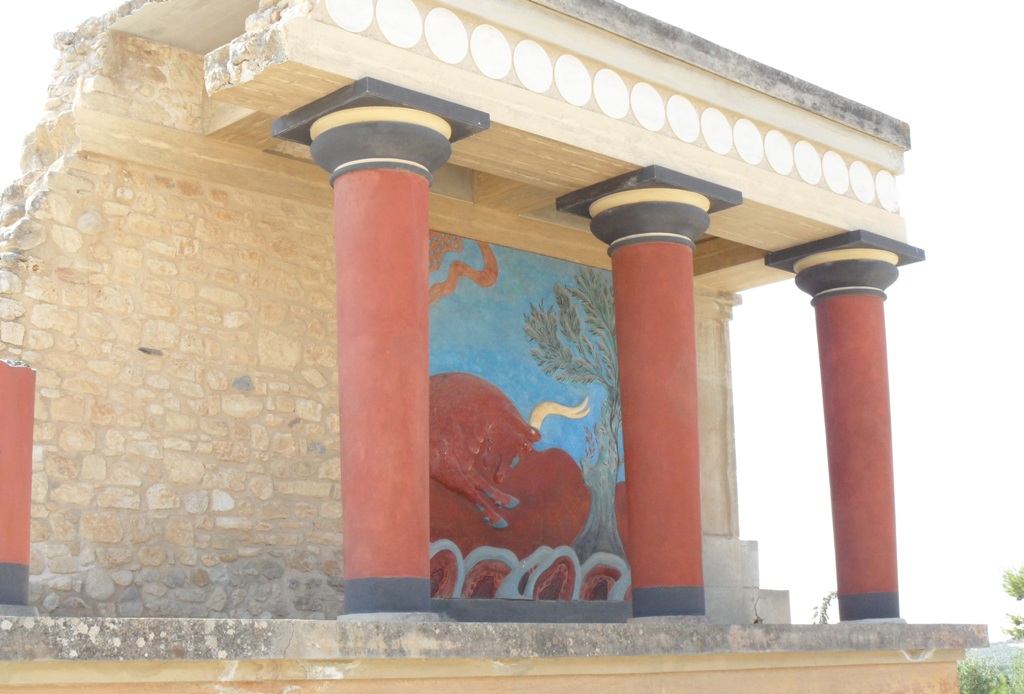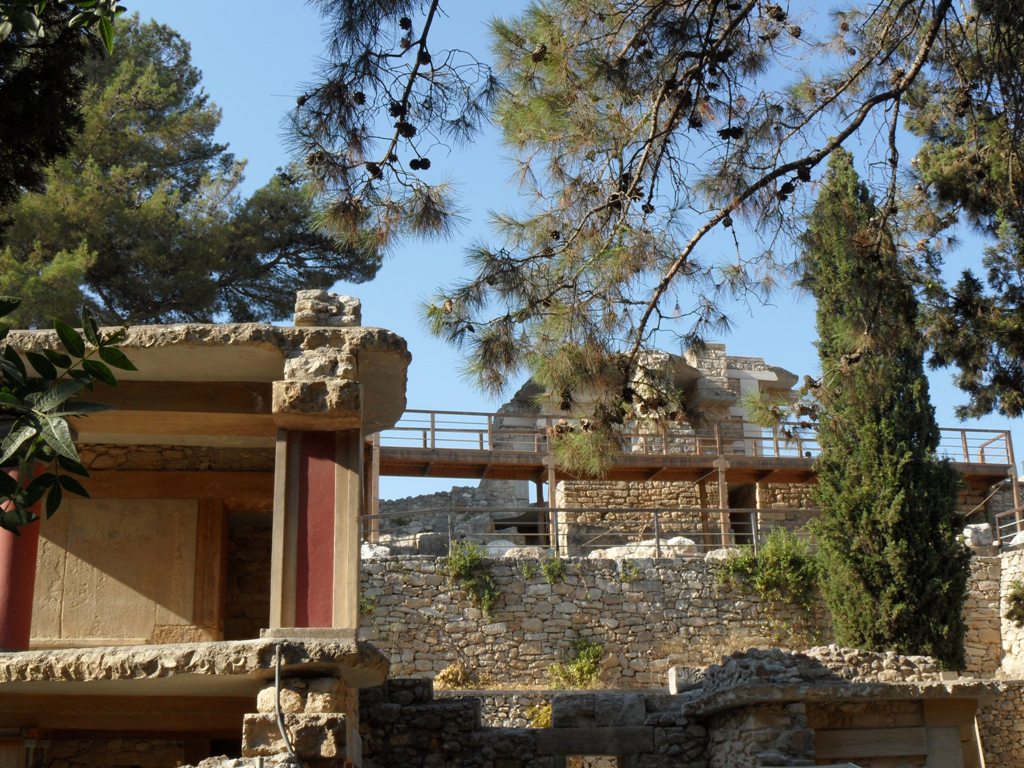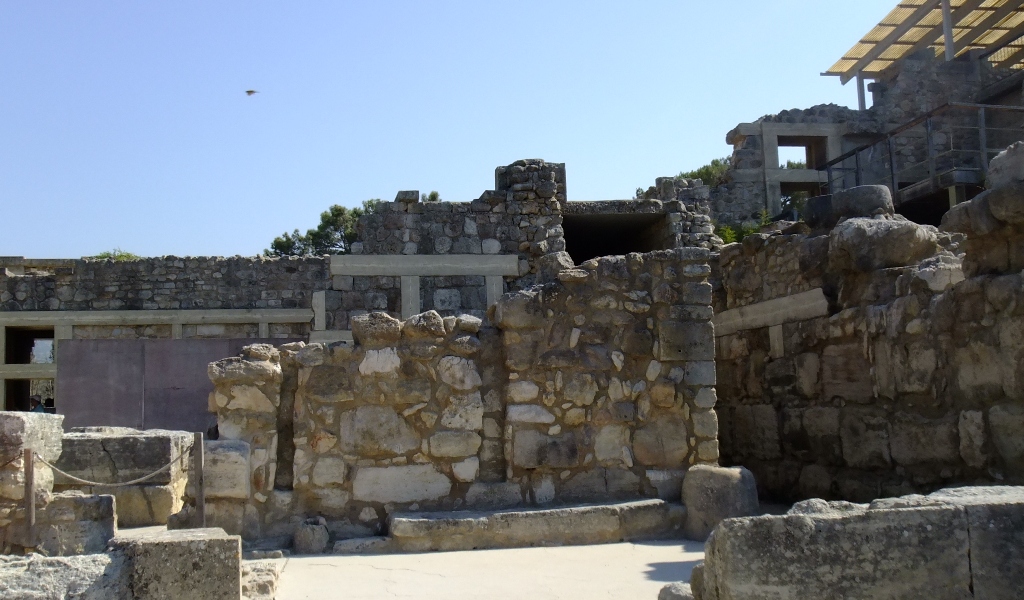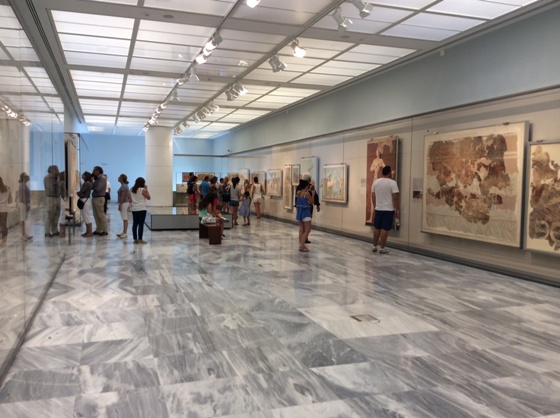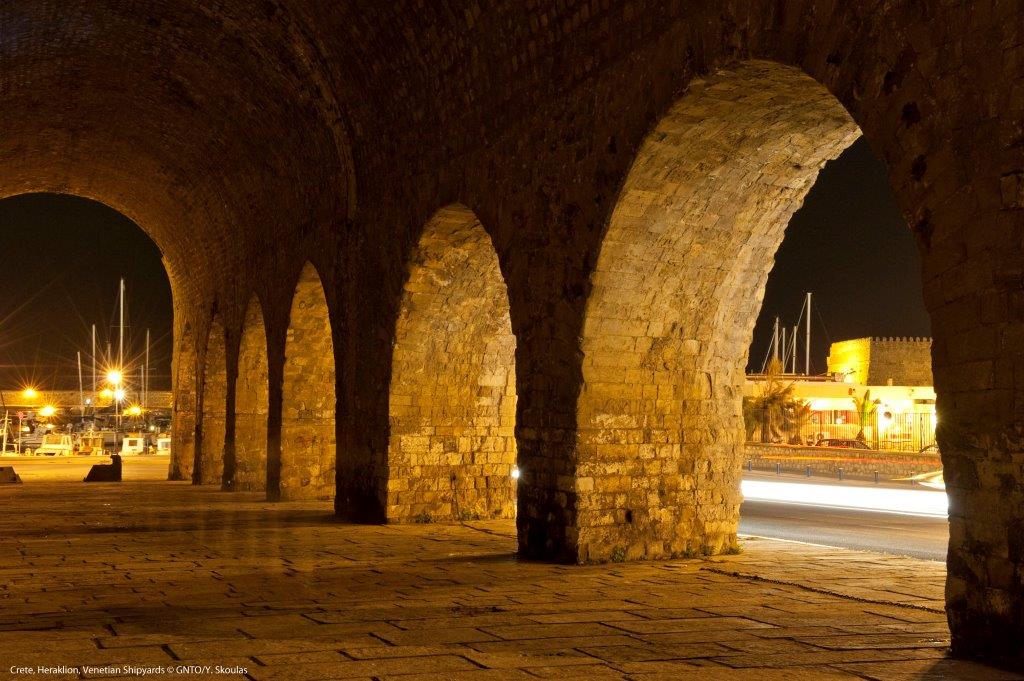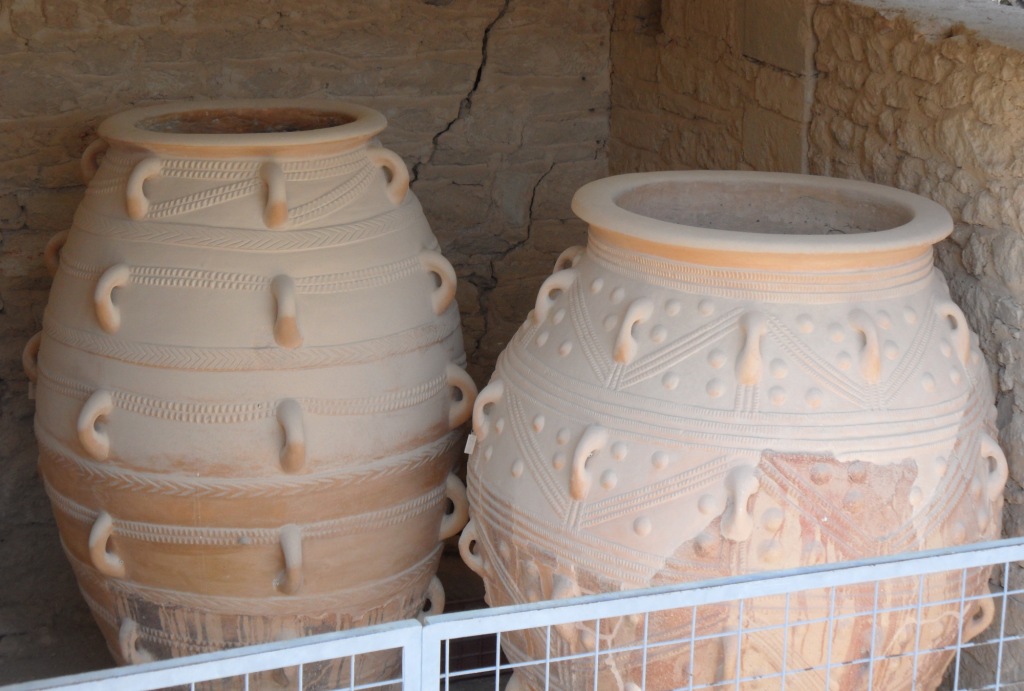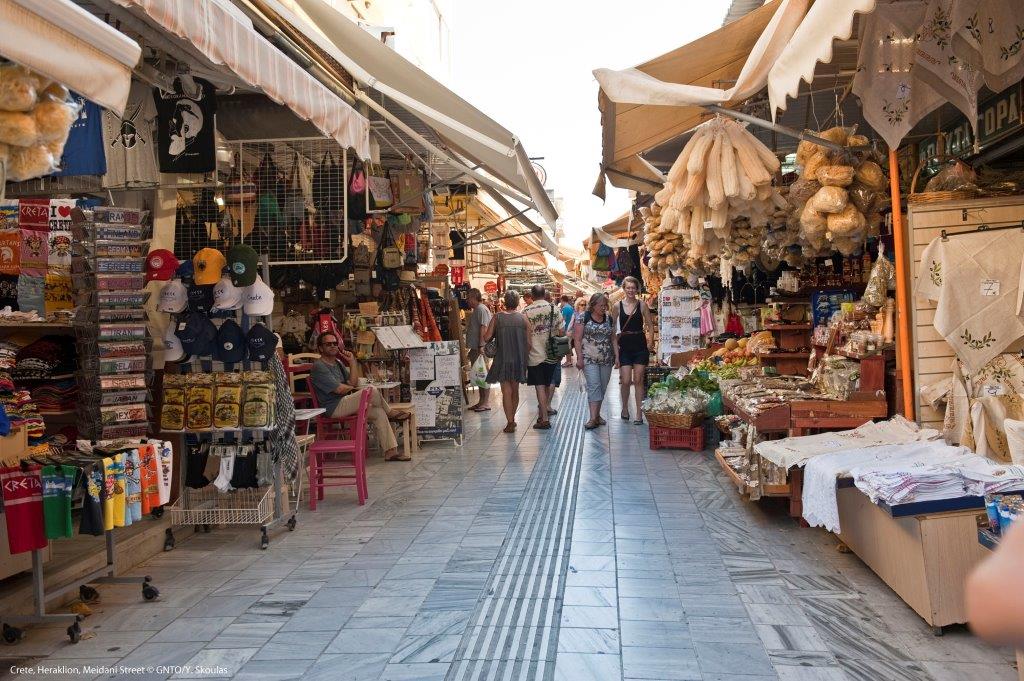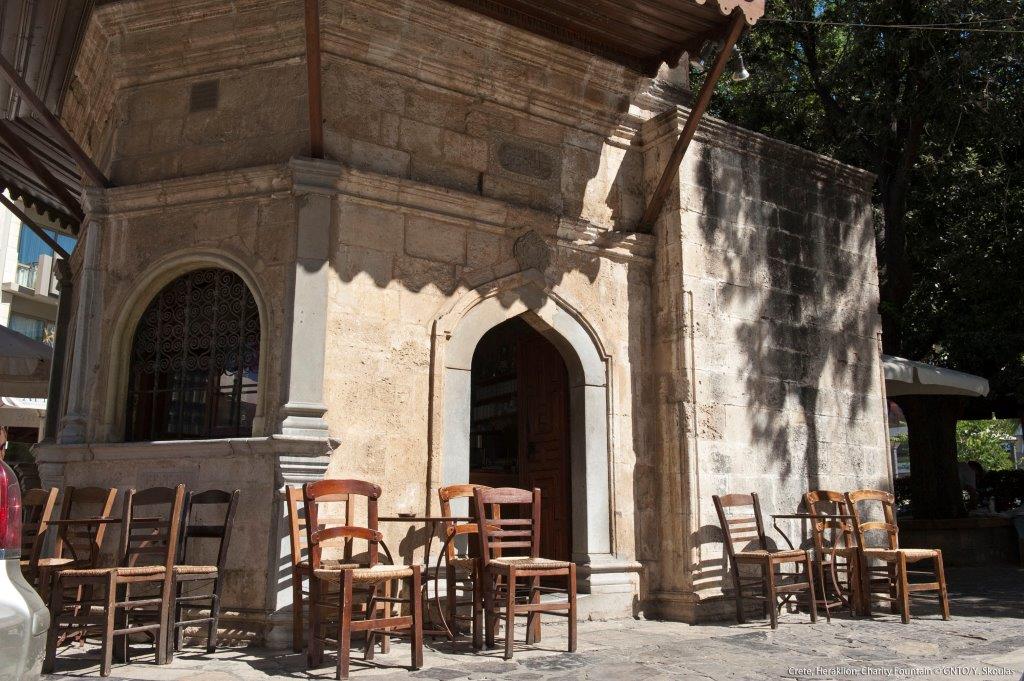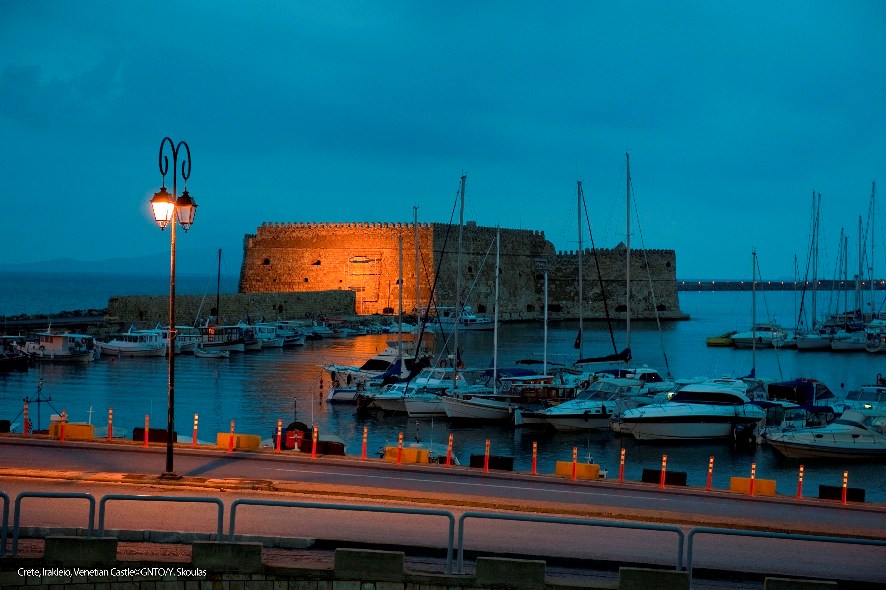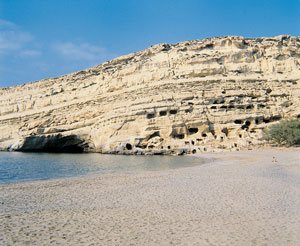Heraklion Region
You are here: Home > Destinations > Greece > The Greek Islands > Crete > Heraklion Region
About Heraklion Region
The Prefecture of Heraklion is the largest administrative division on Crete. The northern part offers attractive resorts with luxurious hotel complexes and long, sandy beaches. The bustling modern city of Heraklion lies almost in the middle of the north coast on the site of the former seaport of ancient Knossos.
The city of Heraklion, historically Candia, takes its name from the ancient Roman port of Heracleum, which most likely occupied the same site. Arab Saracens, who conquered Crete in 824 AD, destroyed the capital and built a new one at the location of present-day Heraklion, which took the Arabic name Khandaq (moat), later corrupted to Candia by the Venetians to whom the island was sold in 1204. Most of the walls built around the city by the Venetians survive to this day. In 1669 the city was ceded to the Turks after a siege that lasted more than 20 years. During the long Turkish occupation, which ended in 1897, Candia was known as Megalokastro. The Turks allowed the harbour to silt up and caused it to lose its former commercial pre-eminence. Turkish rule ended in 1898 after the Great Independence War that began in 1821 and ended with the formation of the independent Cretan Republic. Finally, in 1913 the union with Greece was realised. During the German invasion in 1941 the city suffered heavy damage from bombing but after WW2 it gained a new harbour, an airport and many hotels.
This area is the richest in Crete in terms of archaeological sites. 5 kilometres east of Heraklion is Knossos, the most important and well known ancient site in Crete, built around 1900 BC.
Phaistos, the second most important palace-city of Minoan Crete, is about 65 km of Heraklion, while 34 km east of the capital is Malia, the 3rd Minoan palace found on Crete.
Second in size and importance only to the National Archaeological Museum in Athens, Heraklion's outstanding Archaeological Museum is rich in exhibits, including pottery, jewellery, figurines and sarcophagi, as well as the famous frescoes from Knossos.
The Historical Museum of Heraklion deals with the history and folklore of Crete since 1000 AD, housing among its collections a painting by El Greco, who was born near Heraklion.
The area has a number of magnificent Byzantine monasteries while the countryside is strewn with small and larger churches, picturesque chapels and small temples carved inside rocks.
Aghia Pelagaia stretches along the shores of an attractive sheltered bay, which is protected from occasional summer winds. This former fishing village is ideal for surfing, water-skiing, and scuba diving. Tavernas, shops and bars make this a great place to unwind.
Hersonissos is one of Crete's liveliest resorts with a wide range of tavernas, shops, cafes, nightclubs and other tourist amenities. Its sand and shingle beach offers a wide variety of water sports. On the nearby hillside the villages of Koutouloufari and Piskopiano are quieter and offer visitors a much more relaxed style of holiday. The neighbouring coastal resort of Stalis has sandy beaches and a laid-back atmosphere but also a good choice of nightlife.
The kilometre-long sandy beach at the resort of Kalamaki is 2.5 kilometres from the Cretan farming village of Kamilari, which has kept its original character, and remains largely untouched by tourism. Kamilari is on a hill, with fabulous panoramic views towards the Ida mountains and over the Messara plain to the sea beyond. Alongside small shops there are Greek tavernas and kafeneions, giving a flavour of typical Cretan village life. Around the village there are plenty of places to explore on foot along local footpaths, or going further afield by car. Some possible outings could be to the Minoan archaeological sites at Phaistos and Agia Triada, only 3 kilometres away, and Matala with its famous cliffside caves.
The little fishing village of Lentas lies on the south coast of Crete, at the foot of the mountains. It sits on a promontory which leads down to a 300 metre-long strip of fine shingle which merges with the Libyan Sea. Until very recently the village had no electricity and was reached only by a tiny unpaved road. Today Lentas is a small holiday resort, which attracts many visitors drawn by the natural beauty of the area. There are tavernas on the beach, and the village retains its quiet simple character. In ancient times, Lentas was most likely the port of the Roman capital of Crete, Gortys, which is also well worth a visit. There are Roman remains to be seen if you are walking in the area of Lentas, such as the two ancient pillars of the Temple of Asklepios.
Matala is saturated in history being the second most important Minoan town in ancient times. It's just over one and a half hour's drive from Heraklion and only 10 kilometres from the Minoan site of Phaistos. Many hundreds of years after the destruction of Phaistos, Matala became the Roman harbour for the town of Gortys. Today the beautiful sandy beach is protected on both sides by high cliffs. In the 60's and the 70's hippies came from around the world to live in the Matala caves. These famous Stone Age caves are now undergoing archaeological research so, unfortunately, spending the night in a cave is not an option!
There is much to explore in the surrounding area: the Minoan Palace of Agia Triada; the famous ancient Roman capital of Gortys; the tiny village of Vori with its Ethnological Museum; the mountain villages of Kamares and Zaros with their countless natural springs, and much more.
Cities to visit
Resorts to visit
Hotels to visit
Where to stay
Flexible Tailor-Made Holidays
- We believe passionately that no two holidays should be the same.
- With our flexible tailor-made holiday options you can travel at your own pace.
- Rediscover a city, a resort or an island in a weekend or longer.
- Take a small group tour or embark upon a more adventurous trip.
Trusted Service
- ATOL cover for flight inclusive holidays.
- One of us at Rediscover the World is very likely to have visited the hotels and travelled along the routes on your itinerary.
- Dynamic, comprehensive travel app with all your documents, maps and much more.
- Full financial protection for your holiday (TTA).
Why book Greece with us ?
- More than 30 years experience in Greece
- Unrivalled expertise of our local partners
- Fly-drives & Island hopping holidays
- Hiking in Crete, Pelion & Zagori
- Professionally guided sightseeing tours
- Personally chosen hotels, apartments & villas
- 24hr assistance whilst in Greece
